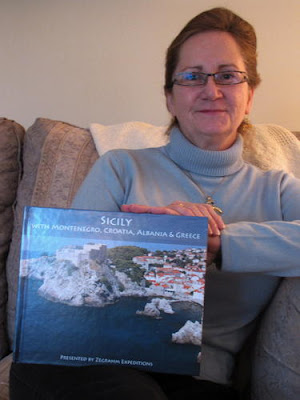Finding missing submarines or battleships is all in a day's work for Dr. Susan Langley.
An underwater archaeologist, Langley has devoted her life to the study and conservation of underwater artifacts, which she usually finds in shipwrecks.
The former Sarnian has helped excavate historic wrecks all over the world, working with UNESCO, Parks Canada, private companies, and — currently — the United States Navy.
She's also the State Underwater Archaeologist for Maryland and an adjunct professor at Johns Hopkins University in Baltimore and St. Mary's College of Maryland, teaching courses like "the history of piracy."
Much of her time is spent teaching, writing, surveying and searching for wrecks.
"We spend a lot less time diving then you would think," she said. "When you watch Discovery Channel, you may see 10 years of work squished into that one hour."
But for Langley, hard work has never been a problem. She's contributed to exhibits at the Museum of Underwater Archaeology, holds a PhD in the subject, and is currently co-authoring a book about legal issues surrounding heritage resources.
Langley said her parents first got her interested in archaeology.
"My family was always interested in history and we would go to historic sites," she said.
But it was a diver's photo on a National Geographic cover that made her consider taking her science underwater.
"That just mesmerized me that you could find these things and bring them up," she said.
There's strategy in selecting sites to survey.
"We have a huge responsibility to the taxpayer," she said. "We want them to be able to come and watch while we do it, we want to do it during part of the academic year so students can come."
Audiences aside, Langley said preserving a site is most important.
"Archaeology is a destructive science," she said. "Once you dig a site, nobody can ever come back and re-dig it. You have to do it right the first time."
It can be frustrating when looters or treasure hunters get their hands on a site, she said.
"There's no 'finders keepers.' (They're taking) it away from everybody else who's entitled to see it.
"(Artifacts) should not belong to one person."
Langley says penetration dives, where the diver enters an underwater structure, are especially dangerous. The diver risks getting lost, fragile walls collapsing, hypothermia, embolisms, and aggressive marine life like sharks or sea snakes.
Nevertheless, she has a diving career spanning three decades.
Today, she gives lectures on expedition tours, feeding the widespread fascination with underwater artifacts.
"You're touching history," she said. "They're little time capsules. There's stuff to be learned even in the mundane."
Thanks to the Sarnia
Observer
Kathy Dowsett
www.kirkscubagear.com

Hello,
ReplyDeleteI am the creator of divezone.net . I added your blog to my blog roll: http://blog.divezone.net/ . It could be nice of you if you can also add me to yours (anchor text "diving blog").
Thank you and Happy New Year!
Julien